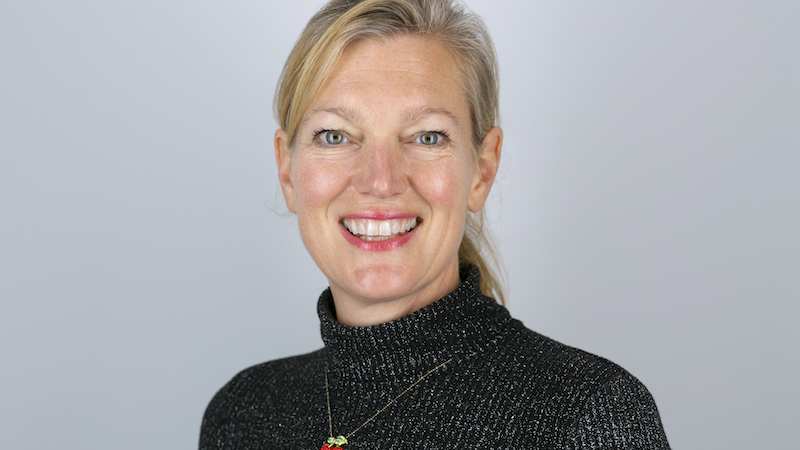Britain’s wealth managers are still woefully behind asset managers when it comes to paying their female employees as much as their male counterparts, with the worst offender reporting a whopping 60% pay gap.
This year companies with 250 employees or more were given an extended deadline of 5 October to submit their gender pay gap reports.
Comparisons of the average and median male and female hourly pay and bonuses in the year to 5 April 2020 show that in several sectors, including financial services, the gender pay gap has become worse, despite firms claiming to up their diversity and inclusion initiatives.
Portfolio Adviser examined a list of 58 financial services companies, including DFMs, fund groups, investment banks, stockbrokers and platforms.
In assessing firm’s gender pay gap figures, Portfolio Adviser used the median figure, or middle of the distribution, which tends to provide a more realistic snapshot of average pay at a firm since the mean can be skewed by a handful of high-earning individuals.
Wealth managers accounted for six of the 10 worst companies on gender pay, a shameful club which was also home to two investment banks, one stockbroker and one financial adviser.
Investment companies with the highest gender pay gaps
| Company | % Difference in median hourly pay 2020/2021 |
| Numis Securities | 60.1 |
| Canaccord Genuity Wealth Management | 59.7 |
| Stifel Nicolaus Europe | 55.2 |
| RBC Europe | 54.0 |
| Investec Wealth & Investment | 53.0 |
| Lazard & Co | 47.0 |
| Tilney Smith & Williamson | 46.8 |
| Quilter Cheviot | 46.0 |
| Brown Shipley | 44.9 |
| JM Finn | 42.6 |
Source: Gender pay gap service/Gov.uk
Canaccord Genuity Wealth Management (CGWM) had the worst gender pay gap of any UK wealth manager in 2020 and was second worst overall across the broader list of businesses Portfolio Adviser examined.
Its difference in median hourly pay was 59.7%, six times higher than the UK average last year (10.4%), while its median bonus pay gap was a staggering 90%.
The remaining bottom nine DFMs reported median pay gaps between 41% and 53%.
10 DFMs with worst gender pay gaps
| Employer | % Difference in median hourly pay 2019/2020 | % Difference in median hourly pay 2020/2021 |
| Canaccord Genuity Wealth Management | n/a | 59.7 |
| Investec Wealth & Investment | 52.1 | 53 |
| Tilney Smith & Williamson | 47.8 | 46.8 |
| Quilter Cheviot | 45.0 | 46 |
| Brown Shipley | 38.3 | 44.9 |
| JM Finn | 42.2 | 42.6 |
| St James’s Place | 43.5 | 42.3 |
| Schroder & Co | 44.0 | 42.0 |
| Brooks Macdonald | 39.8 | 41.8 |
| Close Brothers | 41.1 | 40.6 |
Source: Gender pay gap service/Gov.uk
Fund groups bad but not as dreadful as DFMs
T Rowe Price was the worst of the asset managers, revealing a 39% median pay gap, up 5.2 percentage points (ppt) from last year, while the rest of the laggards had pay gaps ranging from 30% to 36%.
Eighteen out of 29 fund groups, including Columbia Threadneedle, Blackrock and Fidelity, had pay gaps below 30%, while six had narrowed their pay gaps to below 20%, including Vanguard and Baillie Gifford. Passives giant State Street recorded the lowest difference in hourly median pay at 10.2%.
However it was a traditional DFM, Mattioli Woods, that reported the lowest median pay gap across the 58 firms at 7.2%.
10 fund groups with worst gender pay gaps
| Employer | % Difference in median hourly pay 2019/2020 | % Difference in median hourly pay 2020/2021 |
| T Rowe Price | 33.8 | 39.0 |
| Newton IM | 33 | 36.0 |
| Franklin Templeton | 35.2 | 35.5 |
| Ninety One | 34.1 | 34.0 |
| Nomura | 39.3 | 34.0 |
| Aegon AM | n/a | 32.5 |
| Invesco | 33 | 31 |
| Standard Life Investments | 35.3 | 30.9 |
| M&G | 28.5 | 30.5 |
| First Sentier Investors | 25.5 | 30.3 |
Source: Gender pay gap service/Gov.uk
This trend even extends to wealth and asset management firms that belong to the same business.
Women at Schroders wealth management business, Schroder & Co, earned 58p for every £1 that men earned on a median hourly basis in 2020, according to its latest report. By contrast, women employed by its asset management business earned 75p for every £1 that men earned.
The same was true with Investec’s wealth arm and its legacy funds business Ninety One. Investec Wealth & Investment (IW&I) reported a 53% gender pay gap last year, the second highest in the wealth management sector, while Ninety One’s pay gap was 34%.
Unsurprising DFMs are behind fund colleagues
City Hive founder Bev Shah finds it unsurprising that wealth managers have made less progress than asset managers in closing their gender pay gaps.
“The challenges faced by wealth management firms do differ from those of fund firms because they are predominately B2C businesses. So, success will come when they link diversity reporting with wider strategic business outcomes.”
One DFM that is taking this approach to tackle their gender pay gap problem and attract more female advisers is Brooks Macdonald, Shah says.
Despite being one of the only firms led by a female during the reporting period, Brooks Macdonald had the ninth highest median pay gap in the wealth management sector last year at 41.8%. This was up from 39.8% in 2019.
Tom Emery, chief people officer at Brooks Macdonald, points out that the DFM has had success in narrowing its mean hourly pay gap, which has fallen 7.9 ppt from 2019.
“At Brooks Macdonald, we understand that developing an inclusive culture that values diversity will support our success and attract and retain the best talent in the marketplace,” he said in a statement.
“We acknowledge however that despite our progress, our gender pay gap remains too wide and we continue to focus on activities to narrow it.”
Brown Shipley sees gender pay gap spike
Several other DFMs saw their median gender pay gaps widen year-on-year.
IW&I and Quilter Cheviot each saw their gaps increase by 1 ppt last year. Both have consistently been among the worst wealth firms on gender pay since reporting began in 2018. IW&I’s gap has actually increased by 2.2 ppt.
Meanwhile Brown Shipley’s median pay gap spiked by 6.6 ppt in 2020, one of the biggest increases across all firms. Its gender pay gap is now 14.4 ppt higher than in 2017 (30.5%).
However, some of the worst offenders have seen improvement. Schroder & Co saw its median pay gap fall by 2 ppt, while St James’s Place and Tilney Smith & Williamson narrowed their gaps by 1 ppt.
The latest reporting period is unique as it coincides with the onset of the coronavirus pandemic in early 2020, a time when millions of employees were placed on furlough.
Pavita Cooper, deputy chair of the 30% Club, fears the pandemic will have an even greater impact on the next set of figures for 2021/22. Even in cases where a woman was the primary breadwinner, many were expected to take on the additional burden of childcare at home while schools were locked down, and they have been slower than men to return to the office.
“Psychologically, the bias around performance management is that someone is in front of you, and you can see them, that those people are outperforming compared to the people you can’t see who are working remotely and are more invisible to you,” she says.
“I think the reality is that it’ll be mostly women who choose to retain that flexibility and I do worry about the impact that will have around things like performance management and assessment and how pay award decisions are made.”
See also: SJP’s macho culture put into cold hard numbers with gender pay gap report
‘Women are not just ignoring this industry, they are actively choosing not to engage’
Wealth and asset managers argue the reason their gender pay gaps are so much higher than the national average is because they have struggled to attract female talent, particularly to higher paying roles.
But Boring Money CEO Holly Mackay (pictured) believes DFMs have done a poor job of pitching themselves to prospective female employees by prioritising “the engineering and the products” over client outcomes.
“I don’t think women are just ignoring this industry. I think they are actively choosing not to engage – as employees or customers. The pipeline of talent is a problem,” says Mackay.
“I think this is a large, interconnected chain. If wealth managers thought more about what engages female customers, and created services which talked more directly to women, then I think more women would naturally gravitate to them, inspired and keen to join that group of people.”
Amazing role models like Fidelity’s Anne Richards are few and far between
Cooper says while the investment industry has made progress in recruiting more women to entry level roles, they are not progressing quickly enough up the ranks, leaving a dearth of women at the top.
Firms that reported fewer women in the highest senior pay bracket last year tended to have wider hourly pay gaps and bonus gaps. CGWM reported just 3.9% of its female workforce were among its highest earners, while IW&I, Tilney Smith & Williamson and Quilter Cheviot were in the low double digits.
| Employer | % Proportion of women in top quartile | % Difference in bonus pay (median) |
| Canaccord Genuity WM | 3.9 | 90 |
| Investec Wealth & Investment | 13.8 | 77.9 |
| Tilney Smith & Williamson | 12.7 | 70.8 |
| Quilter Cheviot | 12.0 | 69.0 |
Source: Gender pay gap service/Gov.uk
At Mattioli Woods, the wealth manager with the smallest median gender pay gap at 7.2%, women made up 35% of its top brass. State Street Global Investors and Baillie Gifford, which also had some of the narrowest gaps, also had over a third of women in the top pay quartile, while Bluebay AM and AJ Bell had 20% and 24% respectively.
While there are some “amazing role models” like Anne Richards at Fidelity, “they are so limited in number,” Cooper says. “And we know that unicorn effect of having just one is never enough. You need a critical mass.”
This is an issue across the board at UK plcs, Cooper notes. A report published last week by the Cranfield School of Management showed there are only eight female CEOs in the FTSE 100. By contrast, the number of women on FTSE 100 boards was 38% in the year to 20 July, exceeding the voluntary target set by the Alexander Hampton Review.
Wealth managers respond
CGWM told Portfolio Adviser it was taking measures to increase female representation and remove barriers to inclusion in all areas of its business. But the firm added its gender pay gap problem had been “exacerbated” by its recent M&A activity. In 2017 it acquired Hargreave Hale, which was revealed to have the worst gender pay gap during the first year of reporting.
“We actively try to recruit female investment professionals, but the reality is, there is a significant lack of female candidates,” a spokesperson for the wealth manager said.
“This signals that as an industry, we need to collaborate and do more to encourage females to work in the wealth management industry to safeguard diversity in the future.”
A spokesperson for IW&I said the business had made “important strides” in the past 18 months under a new management team to address its gender pay gap, such as getting more women into its C-suite. It hired Barbara-Ann King as chief commercial officer in December 2020, followed by Nicola Toyer as head of charities in February. In August Stacey Parrinder-Johnson, who has been with the company 16 years, was promoted to chief investment officer.
Brown Shipley also said it had made several senior female appointments since the end of the reporting period on 5 April, including its new chair Kath Cates.
A spokesperson said the firm had a “structured plan” to close its gender pay gap, “which is regularly reviewed to ensure it remains fit for purpose”. This includes a two-pronged approach to increase the number of diverse colleagues in senior management, as well as launching internship, talent and mentoring programmes.
Quilter said it has set a group-wide target to increase female representation from 35% to 38-43% by the end of 2023.
“Although traditionally a male-dominated industry, we believe investment management is an attractive career choice for women and the sector will ultimately gain if it can better tap into the pool of female talent,” a spokesperson said.







